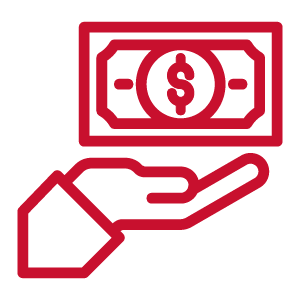
Over the years there have been a number of changes to the federal student loans offered to borrowers. The Department of Education is working to simplify the student loan system. Today, the government only issues Direct Loans to new student loan borrowers–but older loan types still exist. And if you took out your student loans a while ago, you may have one or more of these types of federal student loans.
It’s important to know exactly what type of loans you have because some loans don’t qualify for certain benefits and programs. If your loan doesn’t qualify for a benefit or program you want to take advantage of, you may be able to consolidate your loan into a new Direct Consolidation Loan to become eligible.
Is consolidating right for me?
See our Consolidation page for more information about whether or not consolidating is right for you.
Federal loans can be either subsidized or unsubsidized. Many borrowers have a combination of the two.
Subsidized loans are only available to undergraduate borrowers and are based on your financial need. Interest does not accrue on subsidized loans while you are in school or during grace periods or deferments.
Unsubsidized loans do not require you to show financial need and are available to undergraduate and graduate students. Interest accrues while you are in school and is added to your principal balance if it’s not paid each year.
The most common types of federal student loans are Direct Loans, Parent PLUS Loans, Graduate PLUS Loans, Stafford Loans, Consolidation Loans, Perkins Loans, and Federal Family Education Loans (FFEL). Most federal student loans are held (owned) by the Department of Education and managed by loan servicers that are hired by the federal government. However, there are still some older types of federal student loans that are held (owned) by the school (some old Perkins Loans), or by a commercial holder (some old FFEL Loans).
If you have any of the following types of loans, you have federal student loans.
Who holds my loans?
Some older federal student loans are not held by the federal government. If your loan is not held by the government, you may miss out on new relief programs that only apply to loans the government holds. But you can take steps to switch to a loan that is held by the government. See our Loan Holder page for more information on finding out who your loan holder is.
Federal Student Loans Issued Today
- Direct Loans (the only types of loans the Department currently issues)
- Direct Subsidized Loans (for undergraduate study)
- Direct Unsubsidized Loans
- Direct Parent PLUS loans
- Direct Graduate PLUS loans
- Direct Consolidation loans
Other Types of Federal Student Loans
- FFEL Loans (issued before 2010)
- Subsidized Stafford Loans
- Unsubsidized Stafford Loans
- Parent PLUS loans
- Consolidation loans
- Graduate PLUS loans
- Joint Spousal Consolidation Loans (last issued in 2006)
- Perkins Loans
- Direct Joint Spousal Consolidation Loans (last issued in 2006)
- Health Education Assistance Loans (HEAL) (last issued in 1998)
- Federally Insured Student Loans (FISL) (much older type of student loans)
- Supplemental Loans for Students (SLS) (much older type of student loans)
- Guaranteed Student Loans (much older type of student loans)
To find out what types of student loans you have, visit our Finding Your Student Loan Information page.